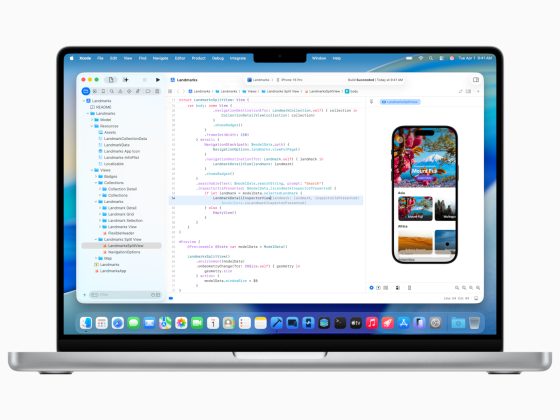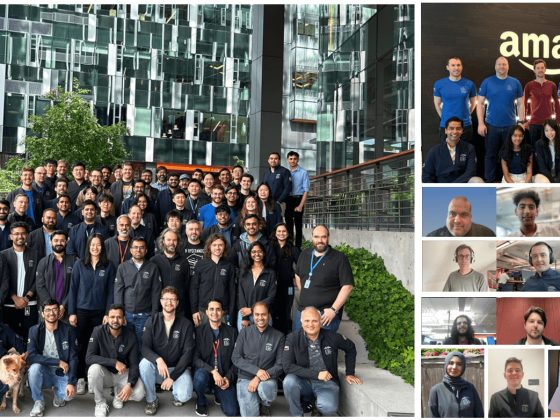As communication service providers (CSPs) continue to focus on capitalizing on the promise of 5G, I’ve been having more conversations with operators and network equipment providers on why and how it may make sense to adopt cloud-native approaches. More specifically, we often discuss best practices around accelerating the time to value of 5G and simplifying the deployment and management of networks as well as the applications deployed on top of them. In fact, Gartner predicts that by 2025, cloud-native platforms will serve as the foundation for more than 95% of new digital initiatives, which is up from less than 40% in 2021. Both Ankur Jain, Head of Engineering for Google Cloud for Telecommunications, and I recently sat down with telecommunications industry experts, including Jitin Bhandari, CTO of Cloud and Network Services at Nokia and Dr. Lester Thomas, Head of New Technologies and Innovation at Vodafone, to discuss how CSPs can best take advantage of cloud-native.
If you are on the path to “cloudify” your networks for 5G and beyond, here’s your chance to learn from some folks who have done it and are doing it now. We summarize five key takeaways from my conversations with these experts.
From our partners:
Do: Leverage cloud-native approaches to simplify networks
5G promises value creation for CSPs and enterprises, but first we must think about simplifying those networks. As Jitin Bhandari from Nokia puts it in his conversation with Google’s Ankur Jain, “Over the last two decades…we’ve built layers of complexity in our telco networks. You see these waves of 2G, 3G, and now we’re building 5G – they are still reminiscent of fixed networks.” Moving to a cloud-native approach could help CSPs break that cycle and simplify telecommunications networks; how the networks are constructed and how they are operated. The good news is that leading with a cloud-native approach is how Google has always built our services and networks, and is a key reason operators and partners like Nokia are collaborating with us to drive value in the 5G era.
Don’t: Just take legacy operational processes with you to the cloud
There is absolutely a world of difference between migrating to the cloud and adopting a cloud-native approach. According to Dr. Thomas from Vodafone, “When you think about migrating existing systems and applications to the cloud, the tendency is to take your operational processes with [you]. You can almost question what real business benefit does that give you?” On the other hand, moving to a cloud service, consumption-based model and leveraging cloud-native solutions like Kubernetes, microservices, and open APIs forces one to rethink how applications are built and decouples one from the legacy operations that, in the past, hindered speed of innovation. Another takeaway from Dr. Thomas is that “our cloud-native approach is typically coupled with agile delivery methods, DevOps so you can take reliability engineering as the way in which you operate and [be] much more focused on data and open APIs.”
Do: Recognize that operators will continue to own and control their networks
Whenever I chat with our CSP customers on whether the cloud and Google Cloud specifically is carrier-grade and telco-ready, the topic of security, privacy, and control often comes up. First, I think it’s important to make it clear that operators will continue to control, own and manage their networks as well as the data running on those networks. You can think of Google Cloud as supplying the enabling technologies. Second, protecting the trust and security of Google Cloud is a key priority for us. As such, we publish and adhere to a set of trust principles that govern our approach to security. In addition, by working with Google Cloud, CSPs can take advantage of the same secure-by-design infrastructure and investments that Google makes to ensure the nine applications and services we offer, each supporting over 1 billion users around the world, run quickly, reliably and securely.
Do: Build scale and simplicity into your data platform to unlock a whole world of use cases
While we are on the subject of control, Dr. Thomas also shared some key insights from an operator’s point of view on building scale and simplicity into one’s data platform. “Getting the data governance right is a critical part,” said Dr. Thomas. “We have all these different use cases that we use the data to drive business insights and value. The underlying data for it is in a common database. So as we do each use case, we will bring in new data into our data ocean, but they’ll be standardized and normalized.” In addition to data consolidation and normalization, it is essential to set standards for data quality, ownership, lifecycle management, interoperability and exchange. With that established, you can really focus on delivering that business value with 5G, IoT, and even network optimization use cases, most of which are data and analytics driven.
For example, Dr. Thomas talked about using data and automation to help detect network anomalies, and that’s only the beginning. “The anomaly detection use case that we’ve done so far is about analyzing the root cause of what’s going on in the network. We see that as the very first part of an autonomous network.”
Don’t: Fall into the habit of architecting separate infrastructure for virtualized and containerized workloads
Though many software vendors are well on the way to migrating to cloud-native containerized workloads, virtualized workloads still exist and will continue to exist for some time. At the same time, the status quo of deploying separate infrastructure for virtualized and containerized workloads creates unnecessary complexity, limits scale, creates unmanageable silos, and is, quite frankly, unsustainable. The solution is to have a single set of managed infrastructure with Kubernetes running on top and the ability to seamlessly place and orchestrate CNFs, VNFs and even edge applications. Google Distributed Cloud was built with the necessary capabilities to enable this CNF and VM coexistence so that infrastructure silos can become a thing of the past.
We are learning a lot from our friends in the telecommunications industry as more operators consider taking a more modern approach to building, operating, and maintaining future generations of networks and services. At Google Cloud, we understand that these are tasks not to be done alone nor in siloes. They will be done in partnership across the ecosystem, where we bring our strength in cloud-native, data, and AI/ML solutions combined with the telecommunications-specific expertise and technologies provided by our partners.
Catch all the conversations with our experts in our Cloudification of Telecom Networks video series.
By: Max Kamenetsky (Outbound Group Product Manager, Telecommunications)
Source: Google Cloud Blog
For enquiries, product placements, sponsorships, and collaborations, connect with us at [email protected]. We'd love to hear from you!
Our humans need coffee too! Your support is highly appreciated, thank you!








